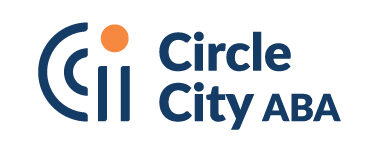Positive reinforcement is among the most effective strategies we can employ in our mission at Circle City ABA to support children with autism. Harnessing the power of positive reinforcement enables us to encourage and shape desired behaviors, foster development, and create a nurturing environment. Join us as we explore the transformative potential of positive support for children with autism.
What Is Positive Reinforcement in ABA?
Positive reinforcement involves providing rewards or incentives to strengthen and increase the occurrence of desirable behaviors. It centers around acknowledging and reinforcing positive actions, allowing children with autism to develop essential skills, improve communication, and cultivate constructive behaviors.
The Impact of Positive Reinforcement
Let’s delve into the remarkable benefits that positive reinforcement can offer children with autism:
- Increasing motivation and engagement – Positive reinforcement is a powerful motivator, encouraging children to participate and engage in desired activities actively. By associating positive experiences and rewards with specific behaviors, we ignite children’s enthusiasm, curiosity, and willingness to learn.
- Promoting skill development – Through positive reinforcement, children with autism can acquire and refine various skills. By consistently reinforcing desirable behaviors, such as following instructions or using appropriate social skills, we help children build a strong foundation for communication, social interaction, and daily life activities.
- Boosting self-esteem and confidence – Receiving positive reinforcement for their efforts and accomplishments bolsters a child’s self-esteem and confidence. It cultivates a sense of pride, self-worth, and belief in their abilities, fostering a positive self-image beyond the targeted behaviors.
- Enhancing behavior generalization – Positive reinforcement promotes the generalization of learned behaviors across different settings and contexts. As a result, children begin to apply the reinforced behaviors in various environments, extending their functional abilities and adapting to diverse situations.
How Parents and Caregivers Can Approach Positive Reinforcement at Home
Stay Informed
Your first step is to keep up with the benefits of positive reinforcement in autism. Visit our resources page for more information involving at-home activities and resources, FAQs, and much more!
Stay Consistent
You will want to be consistent in delivering positive reinforcement in ABA therapy at home. Reinforce target behaviors immediately after they occur and consistently apply the reinforcement plan across different settings.
Monitor Progress
Keep track of your child’s behavior at home, noting the effectiveness of the positive reinforcement plan. Make adjustments to the plan as needed based on your observations and the recommendations of therapists and other guides.
Seek Professional Guidance as Needed
Consult with an ABA therapist or behavior analyst for guidance and support in developing and maintaining a positive reinforcement plan that is tailored to your child’s needs.
Implementing Positive Reinforcement Effectively
To effectively utilize positive reinforcement, consider the following strategies:
- Identify target behaviors – Determine specific behaviors that you wish to reinforce. These can include social skills, communication, self-help skills, or any other development area requiring attention. Clear and measurable goals will help guide your reinforcement efforts.
- Select meaningful reinforcers – Discover what motivates and captivates the child. Reinforcers can be tangible rewards, such as small toys or treats, or intangible rewards, like verbal praise, high-fives, or a particular activity. Understanding individual preferences ensures the chosen tips have a meaningful impact.
- Offer immediate and consistent reinforcement – Provide reinforcement promptly and consistently when the desired behavior occurs. This strengthens the association between the behavior and the positive outcome, making it easier for children to understand and replicate the behavior in the future.
- Apply a gradual fading of reinforcement – As skills develop and behaviors become more consistent, gradually reduce the frequency of reinforcement. This fading process encourages independence and self-motivation, empowering children to internalize the desired behaviors without constant external rewards.
FAQs About Positive Reinforcement in ABA
If you are still asking yourself: “What is positive reinforcement in ABA,” we’re here to help you and your child. Some frequently asked questions about positive reinforcement in autism include the following.
What are some potential challenges when implementing positive reinforcement?
One challenge that can come about when implementing reinforcement strategies is identifying which reinforcer is most effective. Be sure to stay patient with your child as it may take some time to determine the best course.
Other issues could include the rejection of certain methods, relapsing, reaching a plateau of progress, and others. Consult with your therapist for assistance with issues you run into.
Can positive reinforcement be used for all types of behaviors?
Yes, positive reinforcement can be used for most behaviors, but its effectiveness may vary based on you or your child’s preferences and the complexity of the behavior.
How often should positive reinforcement in ABA be used to be effective?
Positive reinforcement in autism should be used consistently and frequently, making sure it is tailored to your child’s specific needs and progress. This will help deliver the best results.
How do the benefits of positive reinforcement impact daily routines and activities?
Positive reinforcement can be integrated daily into routines by identifying opportunities for reinforcement, big or small. You can also set clear expectations and provide immediate feedback and celebrate successes.
Are there any resources or additional support available for parents who want to learn more about positive reinforcement in ABA?
For parents who want to learn more about the benefits of positive reinforcement in ABA, you can join various online courses and support groups, read insightful books or publications, or consult with an ABA professional.
Additionally, please visit our blog where we consistently provide helpful resources and useful information for parents and children.
Contact Us Today About the Benefits of Positive Reinforcement
Positive reinforcement is a powerful tool that enables us to create an environment where children with autism can thrive. By employing this technique, we can motivate, nurture, and guide their development, fostering a sense of accomplishment and well-being.
Circle City ABA embraces the potential of positive reinforcement, celebrating the progress and achievements of each child. Together, we can create a world that empowers and supports every child with autism on their unique journey of growth.
Contact us for more information about Circle City ABA and to inquire about starting ABA Therapy services.



